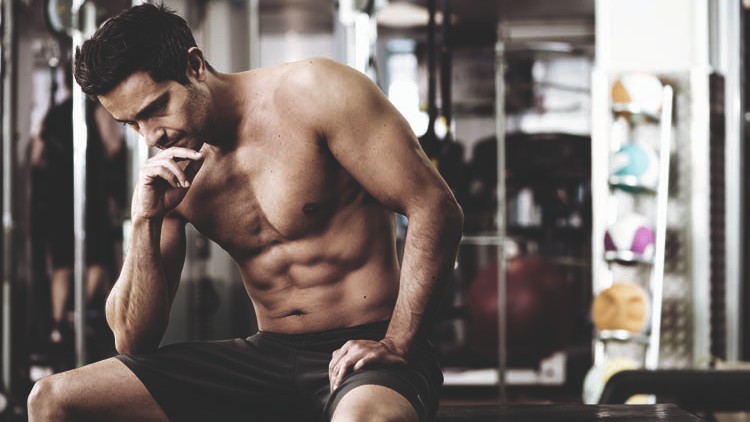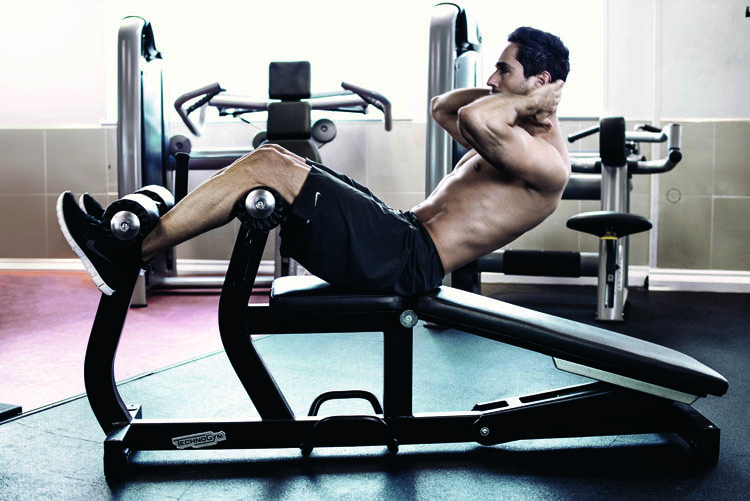How to choose the best fat loss regime for you
What’s the best bulk-shedding strategy for you? It depends on how much you’ve got to lose. Take your pick

Looking for a one-size-fits-all weight-loss plan? There's no such thing. Or at least, there isn't if you want to shed fat in the most efficient way possible. If you've been letting things go for a while and you need to lose a quarter of your bodyweight just to get within the guidelines for decent health, there's no point prescribing yourself three hill sprint sessions a week and obsessing over your green tea intake – you've got bigger, easier changes to make. Conversely, when you're well on the road to ripped and just want to lose that last half-kilo, you need to focus on the details – what got you to 10% body fat might not get you to 8%.
That's where MF comes in. We've consulted some of the country's leading nutritionists, trainers and fat-loss experts to give you advice that works at every stage of your fat-loss journey. You can follow the whole plan or simply pick your starting point and get to work. And be proud to call yourself a loser.
What have you got to lose?
Before you start, remember one thing: you’re aiming to lose fat, not just weight. If you follow a workout plan, bear in mind that your scales may fluctuate as exercising causes you to put on weight. Work out your body-fat percentage with this guide
20% No visible muscle definition and only a hint of separation between muscle groups.
15% You should be able to see some muscle separation between your shoulders and upper arms. You won’t have visible abs.
12% You’ll see more muscle separation in your chest and upper back, and may have the first glimpses of a four-pack, depending on the lighting.
10% Muscle separations get deeper and you can see your six-pack when flexing.
Get the Coach Newsletter
Sign up for workout ideas, training advice, reviews of the latest gear and more.
7- 9% You’ve always got a six-pack and your face starts to look more angular.
Step 1: 20kg to go
Big fat loss means big alterations. At this stage, keep it simple with compound movements and sweeping dietary changes.
Lift big, lift basic
This isn’t the time for isolation moves. ‘The focus of your training at this stage is to recruit as many muscle fibres as possible, which you’ll do with a mix of low-rep strength training and high-rep volume training,’ says coach Chris Burgess (chrisburgesspt.co.uk). ‘Sprinting is out because your body can’t handle the impact. You can still do high-intensity work, but do it with kettlebells or dumbbells.’
Eat for health
‘Eat plenty of fruit and veg for a constant supply of vitamins,’ says Burgess. ‘Get lots of healthy fats from avocados and nuts, and get your carbs from the best bang-for-buck sources such as sweet potatoes.’ Keep a food diary for a week and aim to cut calories but increase protein. ‘Aim for 2-3g of protein per kilo of bodyweight a day,’ says Burgess. ‘And don’t avoid grains and dairy. Cutting them out too early is like setting off all your fireworks at once – you’ll have no tricks left for later on.’
Time your meals
‘There’s a lot to be said for building consistency through structure and being organised,’ says Burgess. ‘In my experience, spreading nutrient intake through the day over four or five meals is the most successful method for doing that.’ In other words, make sure you have lunch and a snack, and you’ll be less tempted by the biscuit jar.
Supplement wisely
Forget diet pills and take supplements that will improve your health. ‘A quality omega 3 supplement will help with insulin sensitivity,’ says Burgess. ‘Also take vitamin D3, which assists in up to 400 metabolic functions in the body, including fat metabolism.’

Step 2: 10kg to go
Not bad, but there's still work to be done. It's time to teach your body to work more efficiently – invest the effort now and reap the rewards later
Eat more fat
It may seem counterintuitive, but fat is not the enemy. ‘Increase your fat intake and reduce your sugar by eating things such as fish, avocado, oils, nuts and seeds,’ says Fitness First trainer Tom Eastham. ‘This will help to teach your body to use its fat stores as fuel.’
Speed up your cardio
Long, slow distance work is not only inefficient, it’s also hard on the joints. ‘High-intensity cardio is a much more effective way of losing fat,’ says Eastham. ‘Hit the rowing machine for ten one-minute bursts of effort, giving yourself a 45-second recovery period between each effort. Be strict! You should leave absolutely nothing in the tank during this session.’ Do this once a week.
Stay strong
Muscle is the foundation of your fat-burning furnace. ‘Big compound lifts such as deadlifts and push presses should be the basis of your workout, and a high-rep circuit afterwards will burn extra fat,’ says Eastham. Do one big lift during each workout and follow it with five rounds of the following circuit: ten press-ups, ten lunges on each leg and a 30-second plank. Rest for just 45 seconds between rounds to keep the fire going.
Keep moving
Not every fat-burning session has to be intense. ‘Active recovery is a nice way of burning calories without thinking about your diet or the gym. It could be a relaxing Sunday morning walk with friends or a casual kick-about in the park – either is better than lying on the sofa,’ says Eastham. Just watch the recovery drinks – most of them have sugar hidden away in their ingredients.
Step 3: 5kg to go
You're nearly there. Now's the time to up the intensity and start fine-tuning your physique
Sprint to win
It’s time to hit the track. ‘Start doing sprints with active rest,’ says trainer Sean McPhillips. ‘Sprint 60m, then turn around and walk back. Repeat this for ten intervals. This type of training works both the fast- and slow-twitch muscle fibres, which has a big impact on your muscles and nervous system. It will also make your metabolism shoot up, which helps to burn fat.’
Time to split
At this stage you’re in good enough shape to start splitting your workout. ‘If you’re doing three sessions a week, do one upper-body, one lower-body and one full-body session,’ says Burgess. ‘This is also the time to begin doing some isolation moves to target the muscles that have started to emerge.’ For a fast-paced finisher, try ‘running the rack’: start with the heaviest dumbbell you can manage for five curls, then drop to the next weight down for another five. Repeat with no rest until you’ve done the whole set.
Cycle your carbs
This is easier than it sounds. ‘On non-training days, keep the carbs low – 60g or less – while upping your fat intake so you’re getting enough calories to recover,’ says Burgess. ‘On strength-training or sprinting days, you can eat more carbs to help your recovery.’
Feel the burn
Add another weapon to your supplement cabinet: creatine monohydrate. ‘Take 30g a day to improve strength – the stronger you are, the better it is for fat loss,’ says Burgess. ‘It also boosts your energy stores so you can to lift more weight during high-intensity sessions.’ And you’ll burn fat for hours afterwards.

Step 4: 2kg to go
The compliments are no doubt coming thick and fast, plus your abs have emerged. It,s time to consolidate your gains and build muscle.
Avoid burnout
‘At this point it’s crucial to preserve muscle while you keep burning fat,’ says nutritionist Ben Coomber. ‘You’re low in calories, so the risk of under-recovering is real. Keep your protein intake high, and experiment with fat and carbs to see which fuels you better. And stick to your workout plan rather than going to failure every time,
or you’ll mess with
your recovery.’
Go green
‘There’s always a risk of slowing your metabolic rate when you’re entering a strict calorie deficit, especially if it’s a low-carb calorie deficit,’ says Coomber. ‘So drink green tea, which can help to keep your metabolism elevated and running on full tilt. Aim for two to three cups a day before 4pm – it still contains caffeine, something you don’t want in your bloodstream when trying to sleep.’
Cut the gut
‘When trying to lose the final few kilos of fat, make sure you avoid water retention, which is linked to inflammation in the gut,’ says Coomber. ‘The common culprits are gluten, wheat, dairy and foods from the nightshade family, such as potatoes and tomatoes. If you think these foods are causing digestive problems, you may find rapid weight loss occurs when you cut them from your diet.’
Pick your protein
Shakes aren’t enough. ‘Choose foods high in leucine such as chicken, turkey, beef and eggs,’ says Coomber. ‘To retain muscle, you need to keep sending an anabolic signal to the tissue, which leucine does. When the muscle cell receives this signal, it keeps repairing and trying to build, which is the perfect scenario for muscle retention in a calorie deficit.’ This means you’ll be ripped, not just skinny.
Coach is a health and fitness title. This byline is used for posting sponsored content, book extracts and the like. It is also used as a placeholder for articles published a long time ago when the original author is unclear. You can find out more about this publication and find the contact details of the editorial team on the About Us page.

